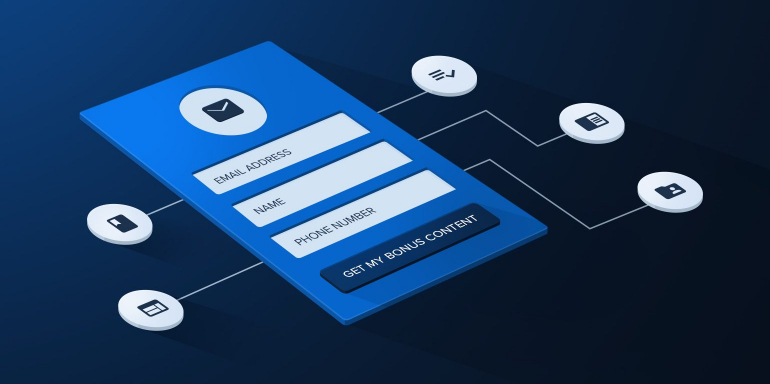Campaign Monitor reports that email marketing generates $38 in revenue for every $1 spent. With that kind of ROI, email marketing is not a channel you can afford to pass up.
A large list of emails is essential to being successful with email marketing, and a popular and effective way to build your email subscribers list is to offer a lead magnet.
The lead magnet is a valuable offer or incentive — usually a content download, demo, or free trial — you provide in exchange for a visitor’s contact information. From industry reports, to ebooks, to custom calculators, to free trials and consultations, there are countless lead magnet options to entice your visitors into becoming subscribers.
Traditionally, marketers have created lead magnets that are general enough to be offered across their entire website. While these broadly-focused lead magnets have been successfully leveraged to build databases for years, tempting visitors to opt-in with a “one-size-fits-all” lead magnet is no longer an effective way to build subscribers.
Visitors want content that is valuable and relevant to their immediate needs.
Take the visitor who finds your website while researching “post-click landing page examples.” The offer of a report on the future of digital marketing and statistics may not be that enticing and your opt-in rate will not be very high.
The visitor arrived at your website hoping to solve a specific pain point — ideas for post-click landing pages. While your report on the future of digital marketing may benefit the visitor, it’s not addressing their immediate need for post-click landing page examples.
The solution: offer content upgrades.
What is a content upgrade?
A content upgrade is a free piece of content unique to each visitor’s reason for being on your website, given in exchange for that visitor’s contact information.
To put it another way, a content upgrade is a relevant lead magnet for each blog post you write.
Take the example above with the visitor searching for “post-click landing page examples.” Rather than offer a general report on the state of digital marketing, provide the visitor with a free resource that is relevant to their immediate need for post-click landing pages. For instance, present and deliver a pack of 10 post-click landing page templates in exchange for their name and email address. You’ve just delivered bonus content that is relevant and immediately useful to the visitor, and in return you add another contact to your list.
Content upgrades convert
Content upgrades have been shown to lead to significantly higher subscriber rates. Bryan Harris of Videofruit has found opt-ins on content upgrades to average between 20-30% and as high as 62%. This is in stark contrast to the 6-8% Bryan experienced with a fully-optimized, generic pop-up.
How to develop your first content upgrade
1. Start with your most trafficked post
Your ultimate goal should be to develop a relevant content upgrade for each blog post. This will take time and your objective is to yield results as quickly as possible, right?
Start by using your analytics to determine which post generates the most traffic to your website and create a content upgrade relevant to that post. The post is receiving the most visitors so it’s fair to assume it will deliver the most subscribers on your content upgrade.
Brian Dean, SEO expert and founder of Backlinko, started with his most trafficked post and offered readers a downloadable checklist at the top and bottom of the post.
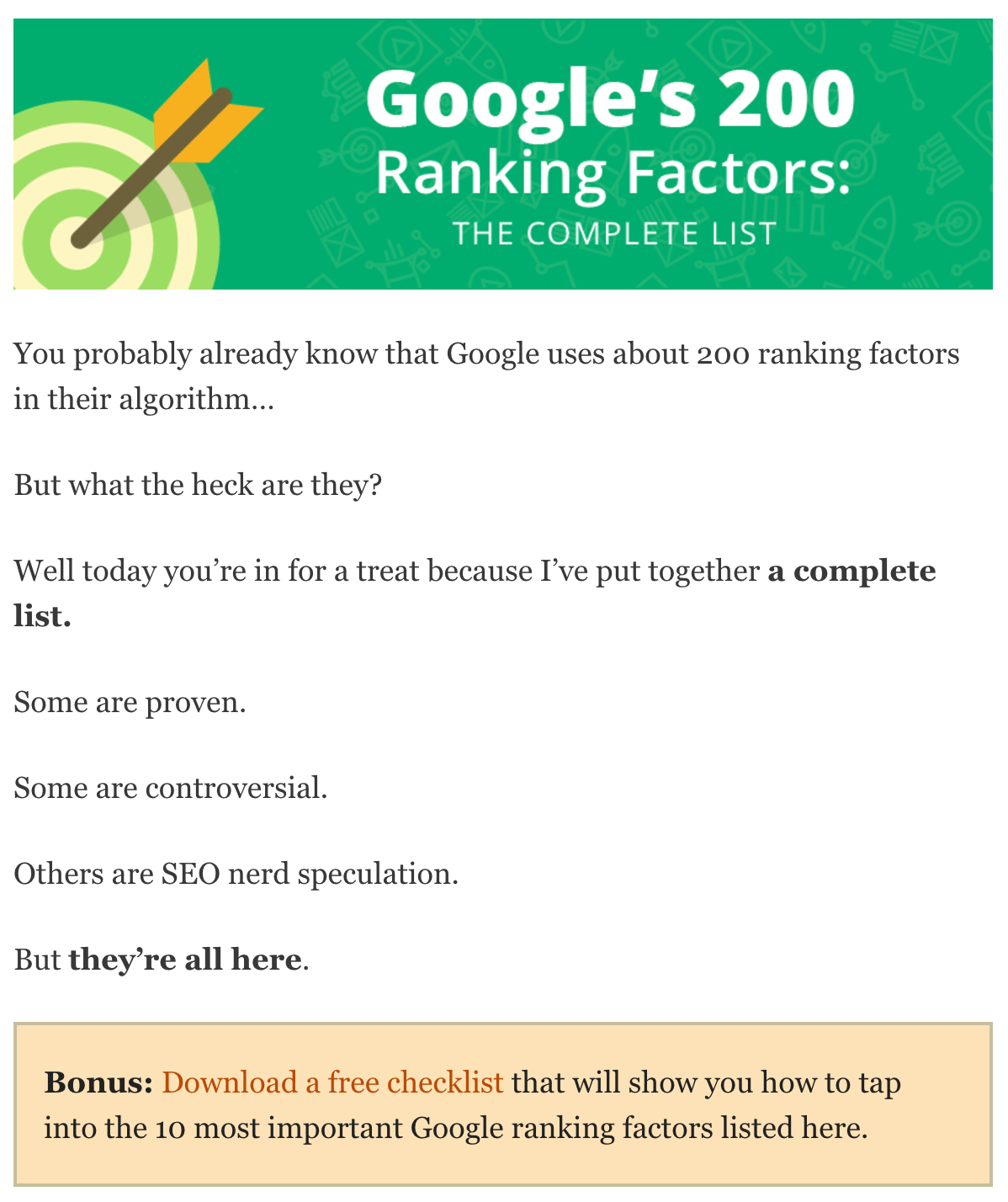
His experiment lifted conversions on the post from 0.54% to 4.82%, an increase of 785%. Over the course of 10,000 unique visitors, that’s a difference of generating 482 new subscribers compared to 54.
Brian went on to add content upgrades to 15 of his blogs posts and boosted his site-wide conversion rate by 185%.
Would a similar outcome on one of your posts be worth the effort? Definitely.
2. Create your content upgrade
Think of your content upgrade as an upsell. A visitor has come to your website, digested the free content you’ve provided, and now you want to entice them to turn over their contact details in exchange for a resource more valuable than the free content you’ve already delivered.
Q: What content could you create and offer your readers that would encourage them to hand over their contact information?
A: Enticing and relevant content.
That does not necessarily mean it will require a lot of time or resources to create.
Stuck for ideas? Lauren Hooker at Elle & Company provides this list of 30 possibilities. They range from the quick and easy, such as a checklist, to more time-consuming offers like a mini-course. Be sure to select the option that delivers enough value to entice the reader while balancing the time and resources you have to spend creating the additional content.
One time-saving hack is to leverage content you’ve already created.
For instance, perhaps you’ve interviewed Wade Foster, CEO of Zapier, and he offered his thoughts on harvesting demand. A recording of this podcast would pair nicely with a blog post you’ve written on demand generation. The episode is relevant to the reader’s current interest and offers more value through exclusive content.
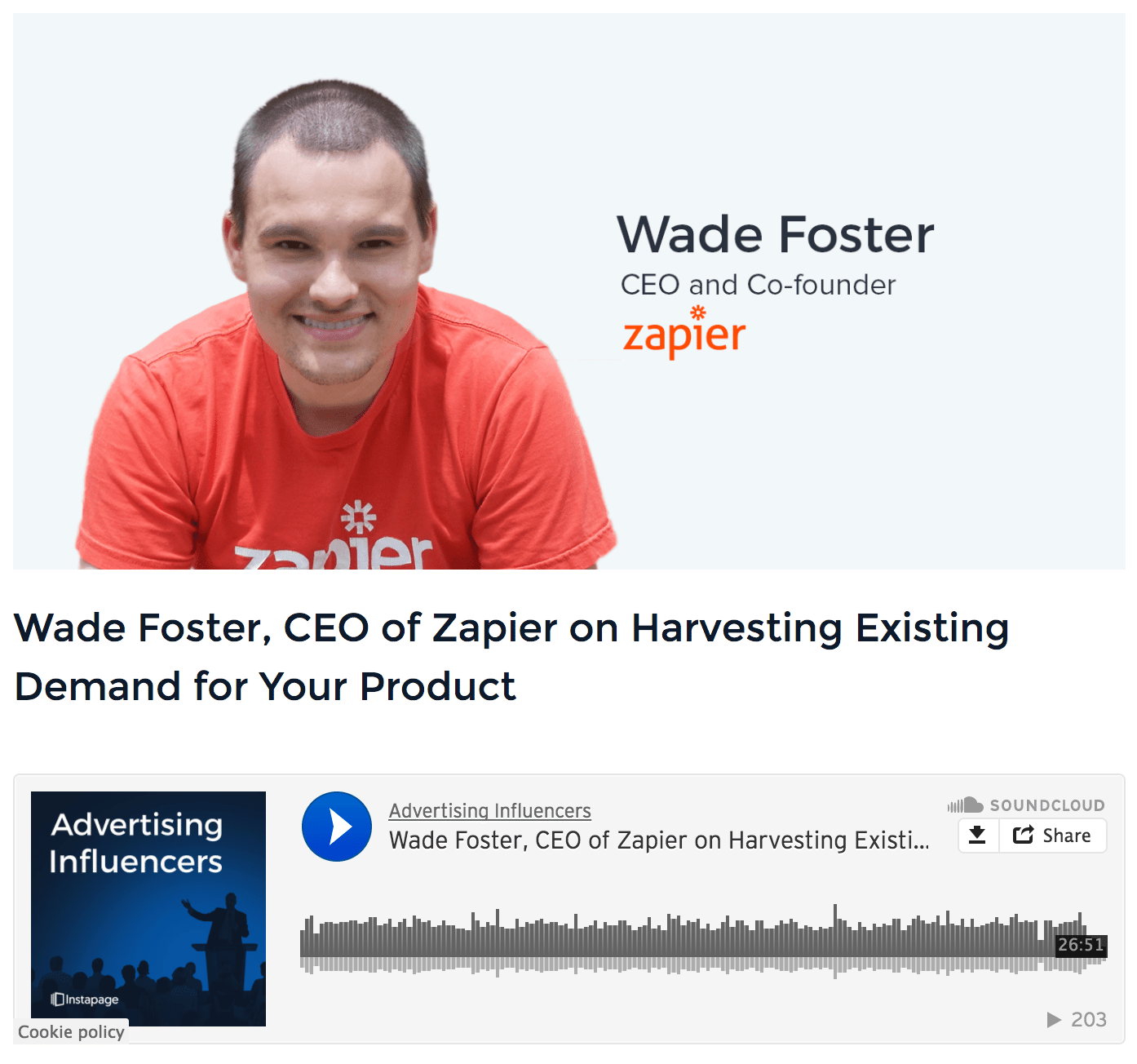
By repurposing great content, you give new life to an older piece of content through more exposure and create a content upgrade without using additional effort or resources.
3. Present your content upgrade
Next, present the upgrade in a way that grabs the reader’s attention and excites them enough to hand over their contact details.
One option is to use a pop-up solution like Optinmonster. Here’s an example from their blog:
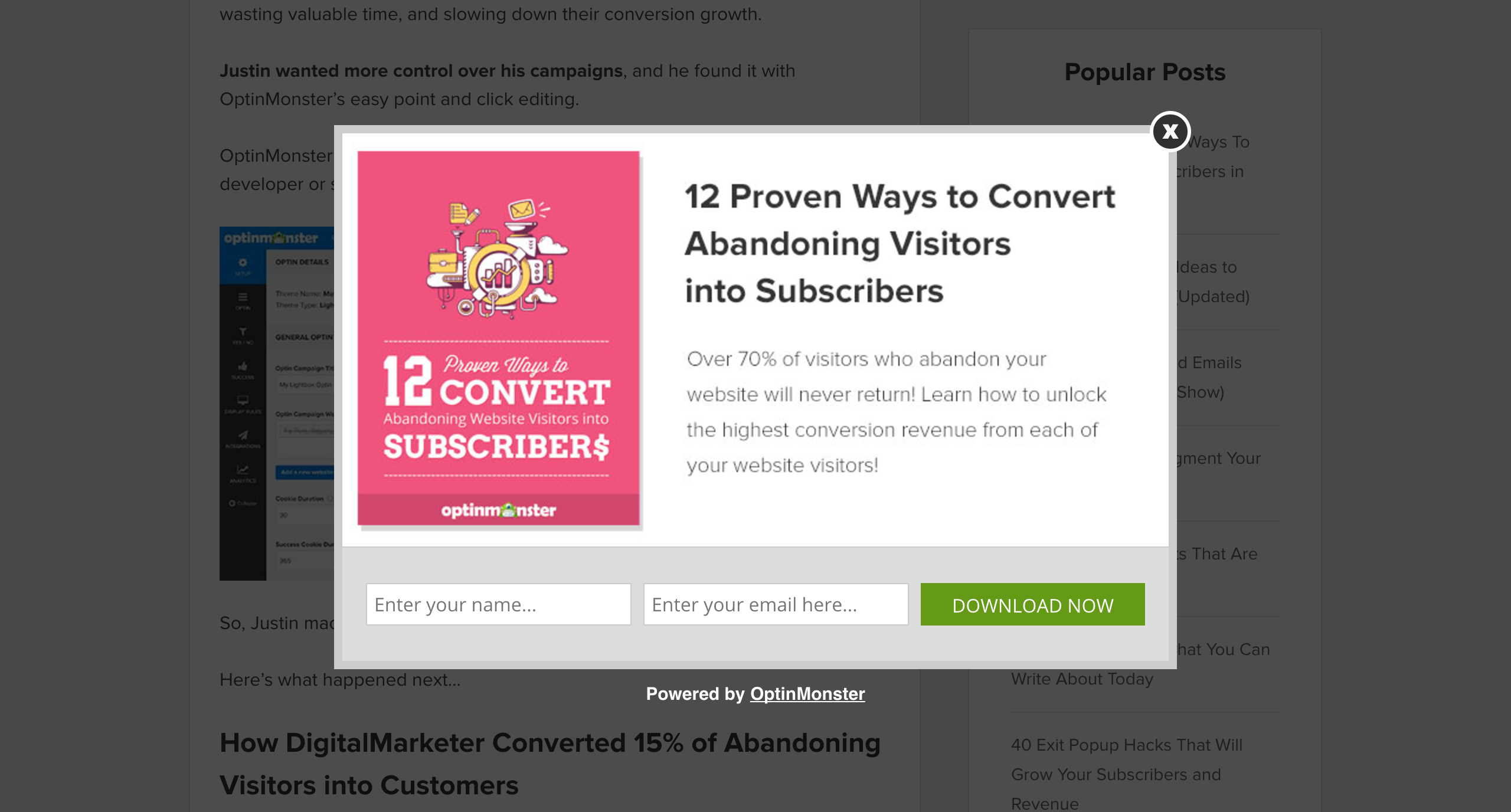
This pop-up appears on a case study post about increasing conversions on visitors who abandon a site. The Optinmonster ebook delivers 12 strategies for converting abandoning visitors into subscribers. The pop-up grabs the reader’s attention, includes a form, and offers valuable bonus content relevant to their immediate interest in converting abandoning visitors.
Not everyone is a fan of pop-ups. Some prefer a more “native” approach. So a second option is to present the content upgrade in a static box at the top, middle, or bottom of the post. It’s less overt than a pop-up but still effective.
Audience Ops uses static boxes in the middle and end of their post “Why Shorter Emails Work” to offer a bonus list of email practices they’ve used to improve their open and click rates.

After clicking on the CTA (call-to-action) button, Audience Ops serves a pop-up where the visitor can input their contact information.
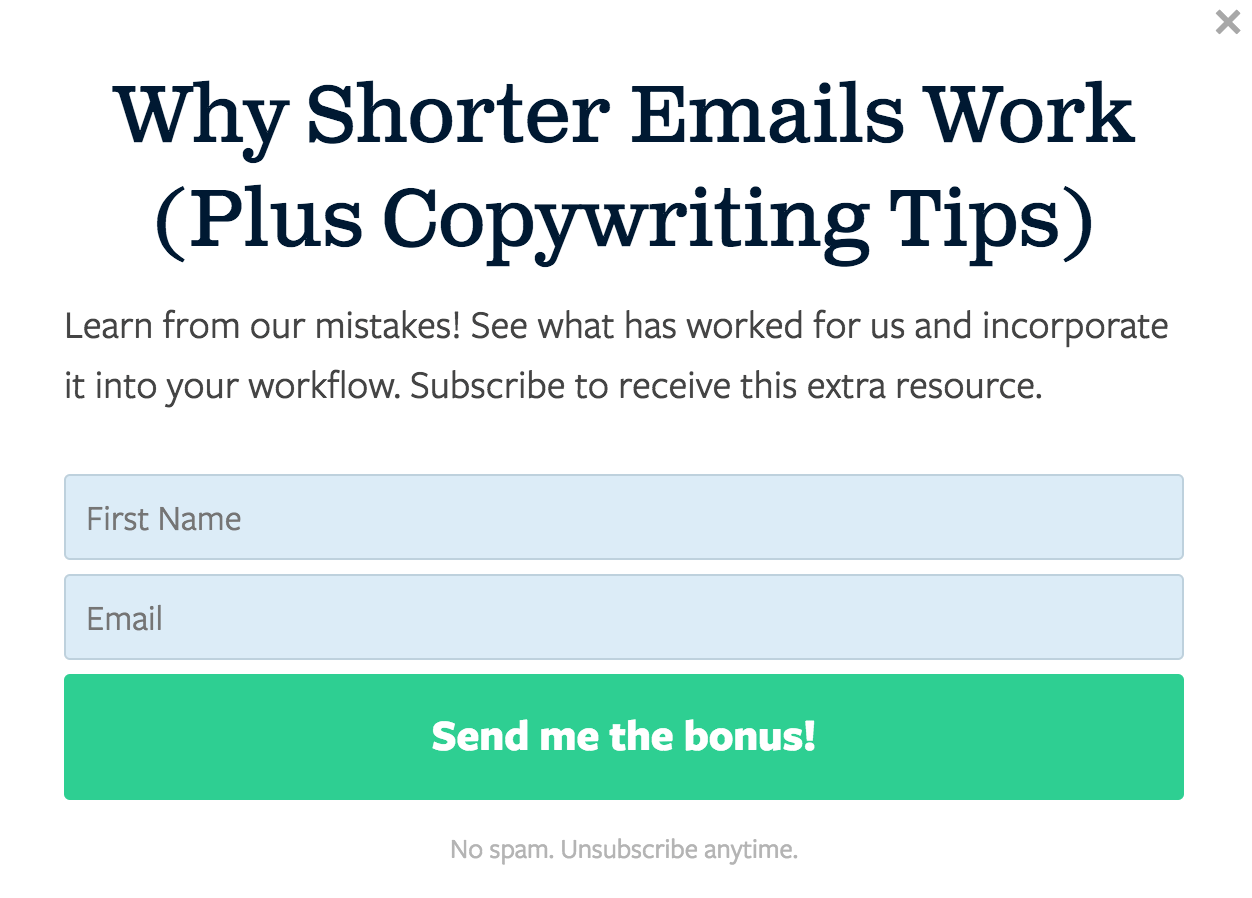
You could also build the offer and form directly into the body of your post as Wendy Maynard does on her blog:
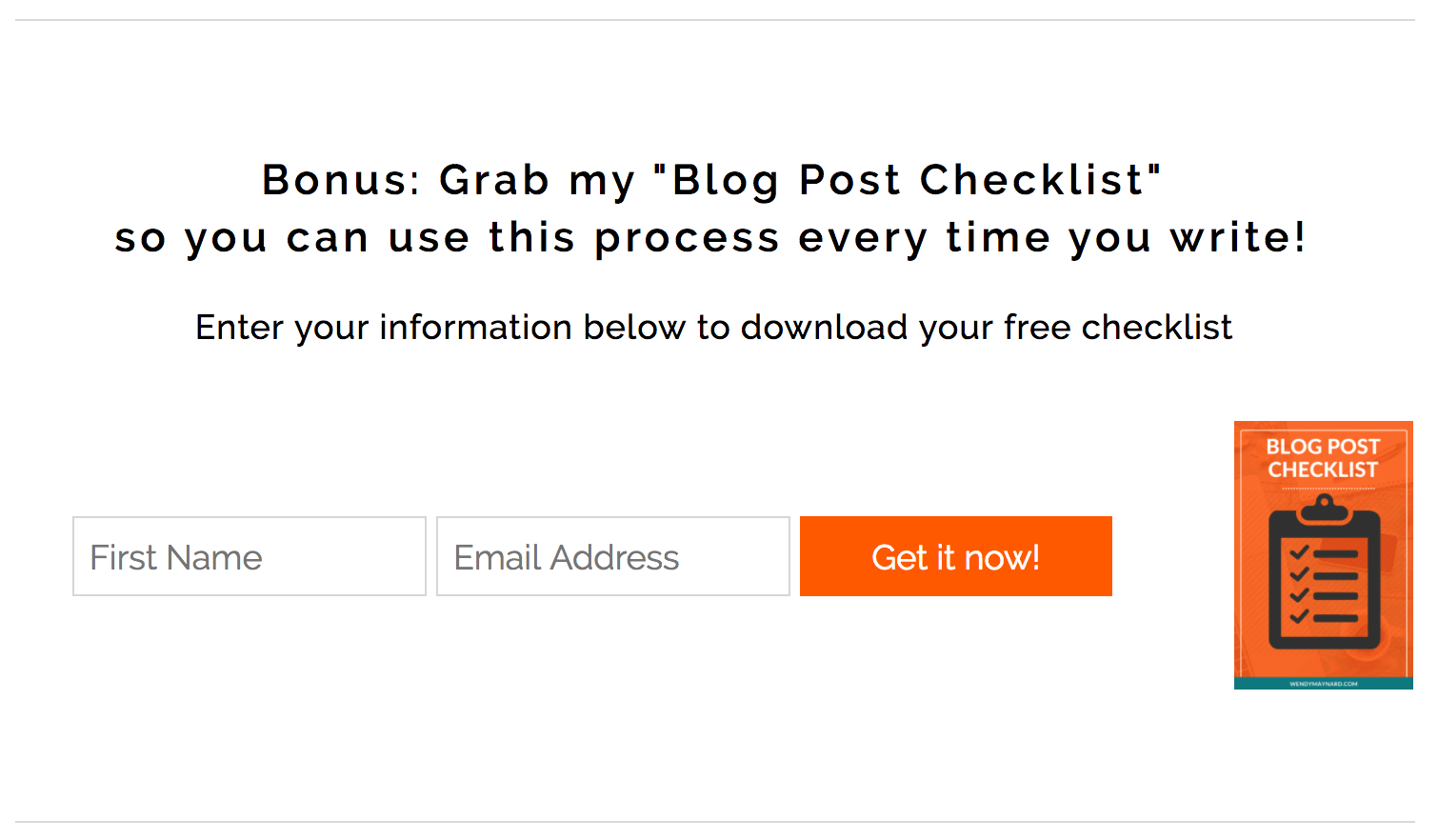
Choose to be brazen with pop-ups, or adopt a more subtle delivery method by presenting the bonus content natively within your blog post. Split test various approaches to see which results in more conversions and go with the one that tests best with your audience.
4. Deliver your content upgrade
Once the subscriber opts-in, deliver the content by email and redirect them to a post-click landing page.
Why?
Delivering content by email ensures the validity of the email address. You are also taking the first, and most important, step in building a relationship with the subscriber. Your database of subscribers is only as good as the quality of emails you’ve collected, and the engagement of your subscribers. If you’ve built a subscriber base comprised of email addresses that bounce or your emails go unopened, the deliverability of your emails will be negatively impacted and your email campaigns will be less effective.
After they have completed the form, redirect your prospects to a Thank You post-click landing page. This isn’t just being polite, you’re positioning yourself for another conversion opportunity.
This is a chance too many marketers are passing up. You have a captive audience. Your new subscriber has just demonstrated interest in your brand, product or service and there is an elevated probability you can successfully encourage them to stay engaged by following you on social media, or even making an outright purchase of a product or service. Seize every conversion opportunity you can!
Rinse and repeat
Once you’ve completed creating and deploying your first content upgrade, start the process over and create your second, then your third… Your goal should be to deliver a content upgrade for every post on your blog to maximize every opportunity for building your list using traffic from your blog.
